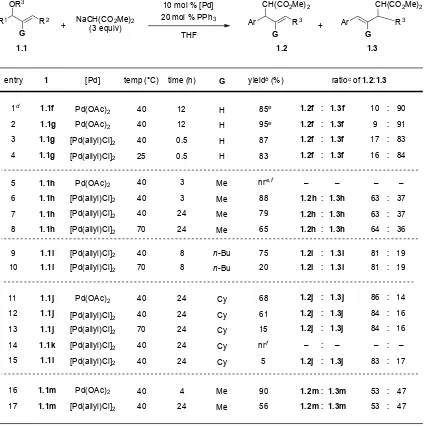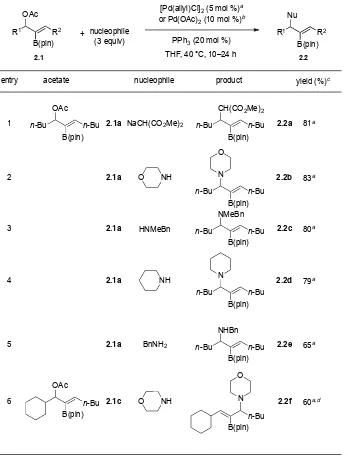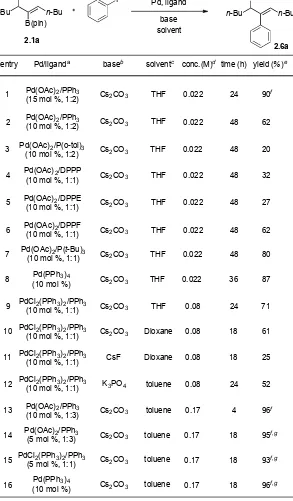Part I: Chemoselective Palladium Catalyzed Reactions of Bifunctional 2-B(pin)-Substituted Allylic Acetate Derivatives Part II: Palladium Catalyzed Deprotonative Arylation of Azaarylmethyl Amines and Ethers
Full text
Figure




Outline
Related documents
As shown 1n Figure 6, RNA synthesis from both the early and late promoter regions was saturated at template concentrations higher than 7x10 M (25ug/ml) and, under these
Agricultural Science Camb. and Logan, J., 1994, Nitrogen and fungicides effects on yield components and disease severity in wheat. A., 1987, Response of spring barley to
¡ RFC 4279: “Pre-Shared Key Ciphersuites for Transport Layer Security (TLS)”, adds three sets of new cipher suites for the TLS protocol to support authentication based
Using a process developed by Genomatica that earned the EPA’s 2011 Presidential Green Chemistry Challenge Award for ―Greener Synthetic Pathways,‖ BASF is
Indications in these patients were as follows: recurrent/chronic pancreatitis or suspected pancreatitis in 10 (40%) cases, solid pancreatic mass in 7 (17.5%) cases, cystic
Scenario 1 is based on a conservative growth profile of the WSA, which would provide additional aviation capacity to the Sydney region as forecast by the Joint Study.. The
Mineralization of 14 C associated with (a) SDZ oxidation intermediates in buffered, ultrapure water, (b) SDZ in buffered UV/H 2 O 2 treated WWTPE, and (c) SDZ
Prior studies examining patient factors related to enrol- ling in PR have often focused on barriers including a lack of acceptance of the disease, lack of knowledge of the disease


![Table 4.2. Scope of aryl bromides in the arylation of 2-pyridylmethyl ethyl ether 4.1a.[a]](https://thumb-us.123doks.com/thumbv2/123dok_us/9332627.1467841/190.612.155.495.178.454/table-scope-aryl-bromides-arylation-pyridylmethyl-ethyl-ether.webp)
![Table 4.3. Scope of 2-pyridylmethyl ethers in the chemoselective arylation.[a]](https://thumb-us.123doks.com/thumbv2/123dok_us/9332627.1467841/191.612.134.516.263.577/table-scope-pyridylmethyl-ethers-chemoselective-arylation.webp)
![Table 4.4 Tandem arylation/[1,2]-Wittig rearrangement of 2-pyridylmethyl ethyl ether 4.1a with](https://thumb-us.123doks.com/thumbv2/123dok_us/9332627.1467841/193.612.119.531.261.510/table-tandem-arylation-wittig-rearrangement-pyridylmethyl-ethyl-ether.webp)
![Table 4.5. Tandem arylation/[1,2]-Wittig rearrangement of 2-pyridylmethyl alkyl ethers with aryl](https://thumb-us.123doks.com/thumbv2/123dok_us/9332627.1467841/194.612.137.509.312.581/table-tandem-arylation-wittig-rearrangement-pyridylmethyl-alkyl-ethers.webp)